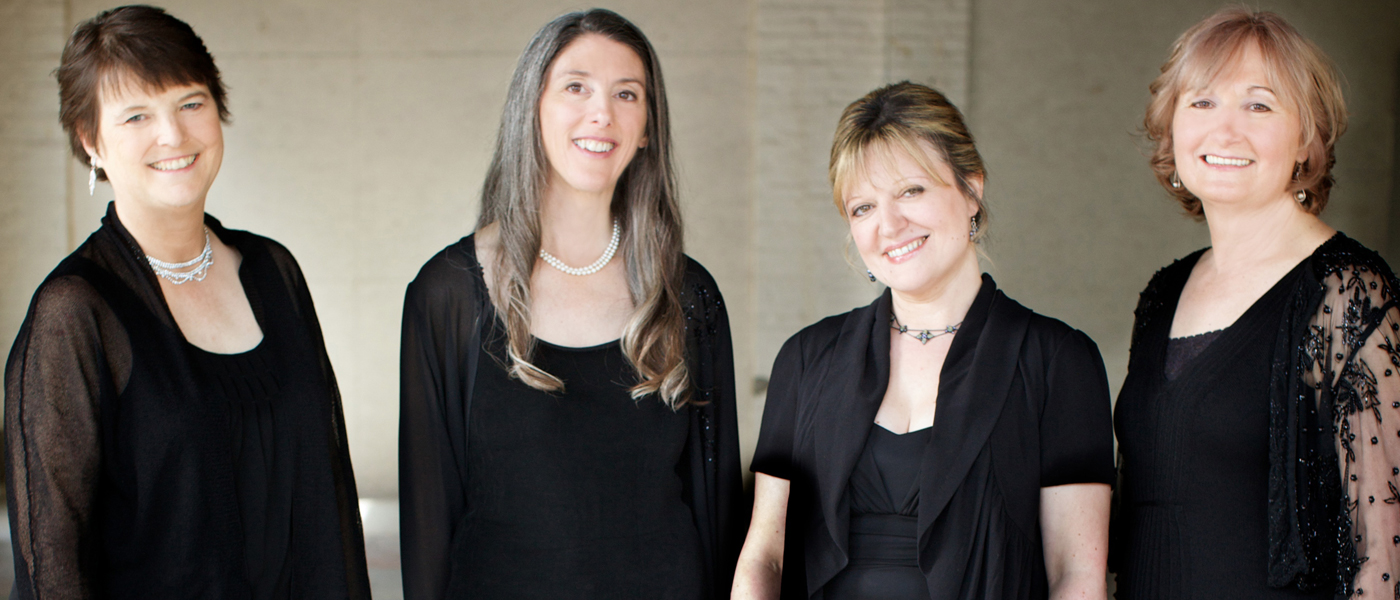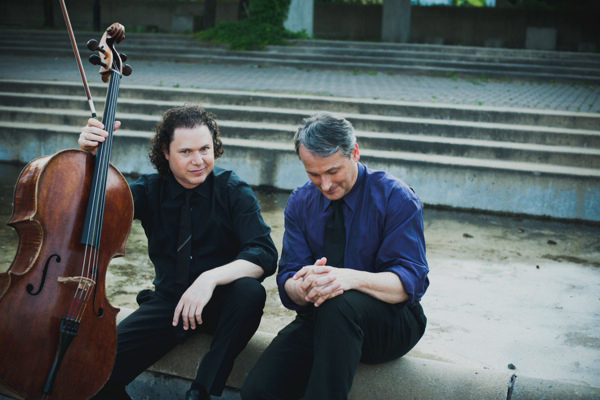
Photo By: Sarah Scott
Welcome to an artistic pairing for the future. Cellist Matt Haimovitz, perhaps the first classical musician to take his music and instrument into club settings, and pianist Christopher O’Riley, known for championing young artists on his National Public Radio and PBS TV shows, “From the Top,” have teamed up to create their latest CD set, Shuffle • Play • Listen. The two-disc recording, and their recent tour of some of the premiere clubs in the U.S., further bridges the dubious divide between the so-called camps of classical and pop music.
Shuffle.Play.Listen is a listening experience all to its own. Beginning with Bernhard Hermann’s Vertigo Suite, composed for the great thriller that Hitchcock set in San Francisco in 1958, Matt and Chris shuffle from the immensely engaging, forward looking classical music of Janácek, Martinû, Stravinsky, and Piazzolla to art pop songs by Arcade Fire, Radiohead, John McLaughlin (of the Mahavishnu Orchestra), Blonde Redhead, Cocteau Twins, and A Perfect Circle. The transitions between genres are far more harmonious than you might think, thanks to O’Riley’s extraordinarily effective arrangements and the duo’s brilliant programming acumen. All the music on Shuffle.Play.Listen sounds as if it belongs together, which in fact it does.
In an animated discussion, the two pioneering artists discuss their CD, their recent tour, and their hopes for the future of classical and pop music.

Jason Victor Serinus: It seems that many artists, ensembles, and composers are trying to bridge the gap between classical and pop music. What effect is that having on classical on pop music, and on audiences?
Christopher O’Riley: With audiences, the general idea is that we’re seeing a widening of the constituency. We’re bringing in a much younger audience to the preponderance of older listeners to classical music.
At the same time, I’m happy to report that some of the more enthusiastic attendees of these concerts tend to be older. They come up and thank us for widening their ears.
On the other hand, you have some pretty heavy hitters in the classical industry who feel that giving any sort of attention to popular culture is really a very, very bad thing for music in general. For me, the proof in the pudding is that audiences are coming out, and not only for our concerts.
I noted on my radio program, “From the Top,” that there are a lot more young musicians who are interested in widening their own horizons in terms of music in which they interact.
Matt Haimovitz: Jason, you live in an area – the San Francisco Bay Area – that is in large part responsible for the complete shift in which people listen today compared to 10 years ago. People experience music differently because of the iPod. People have access to iTunes and so much music at all times, at anytime they want it, in all genres.
Very few people nowadays listen exclusively to one genre of music. In a way, that’s what we’re celebrating with what we’re doing. We’re embracing how audiences of today listen to music, and creating a program that that references between some of the different genres. There are harmonic and rhythmic ideas that you can experience whether you’re playing Janacek or Radiohead.
CO’R: If you listen, not only with the iPod, but with all the technologies and sites it has spawned that offer daisy chains of recommendations, then we’re in a perfect position with this project to say, ‘If you like Martinû’s Variations on a Slovak Folksong, you’re likely to enjoy John McLaughlin’s The Dance of Maya.’
JVS: Do people tell you that they do download the music, and then shuffle it into different orders than are on the CD?
MH: The irony of our title is that we actually don’t really want you to shuffle; we want you to listen in the order we presented it. But if you want to have fun and be interactive, go ahead.
It’s funny. I was just in Miami, and one of the administrators of the American Music Festival had got ahold of the CD. I walked into her office and she was playing on shuffle. I said, wait a minute, I recognize that, but it was in a completely different order than I was used to. It was really disconcerting to hear it on shuffle, I have to say [cracking up].
We put a lot of thought into the order, even on live programs. We put a lot of care into how you go form one of these genres to another. On the surface, it seems schizophrenic. But there’s definitely an emotional trajectory that we’re going for.
JVS: If you play the pieces in a different order, do you have a different emotional response to the music? Do you intentionally juggle them around in a club context to explore a different response with a different order?
CO’R: Since we have two CDs of material, most of the decision has to do with what one leaves out rather than how they interact. But it is true that there’s a different trajectory to having a double-halved recital program and having a nice closing piece for each half, and trying to have a perfect balance of familiarity and novelty.
I don’t think there’s a better opening to the program than having Matt come out and play a prelude to one of the Bach suites, then following with an overture such as the Vertigo Suite. The most familiar pop item on the program is Radiohead’s Pyramid Song. Putting those three together, and furthermore encompassing 300 years of music, gives a good idea of what we’re going to be about for the evening.
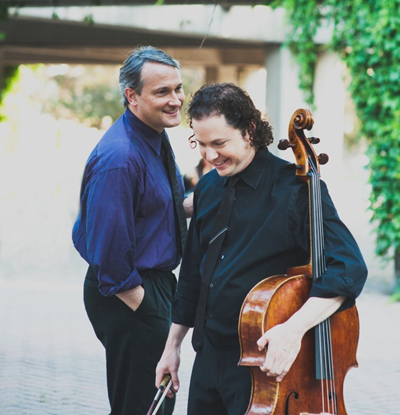
Photo By: Sarah Scott
JVS: It’s very interesting that you start with Bach. It’s like the classical formula for a vocal recital that always starts with the obligatory Handel or piece by some other early music composer, and then moves forward to the bel canto or romantic era.
MH: The Bach does two things. I find that whenever you play with a piano, the sense of equality between the two instruments is so disparate. The Bach establishes the cello as able to hold its own as a multi-voice, polyphonic instrument.
Secondly, I’ve had enough experience going out on the road and diving right in with the hard stuff, then being told, ‘Can you give us a little love first before you get into all that?’ So, if you start with the Prelude of the Bach Cello Suites, it’s more recognizable than the Radiohead. People melt right into the program. Plus, the Prelude is somewhat improvisatory in feeling, so it establishes the freedoms we take later on in the program.
JVS: I really love the album. When you say the Bach is more recognizable than Radiohead, is that also true of young people?
MH: I’d venture to say that virtually every Radiohead fan has heard the Prelude to the Bach, but obviously not in concert.
CO’R: They might have heard it on a TV commercial. It’s everywhere.
MH: It’s definitely one of the Top 10 classical pieces out there.
CO’R: I actually heard a hip-hop piece the other day based on the Pachelbel Canon.
JVS: You’ve picked pop art songs. Certain tunes might well in transcription, such as Beatle Tunes. How many pop songs would work in this cross-pollenisation genre?
CO’R: It has a lot to do with texture. When you mention the Beatles, there are a lot of songs that might work, but we’re dealing with cross-genre performance, and a lot of the Beatles material is already ironic in its genre placement. “Rocky Raccoon” is a Tin Pan Alley song, and “Eleanor Rigby” is already almost a classical piece.
I for one as an arranger have been loath to mess around with too many Beatles songs. But as for Radiohead and Arcade Fire and Cocteau Twins, texture is the pre-eminent quality – the ability to set up a texture that has a prominent vocal part, but also has the ability to allow Matt to interact with me and become textural and accompanimental. It becomes, not just a song transcription in the Liszt sense that isolates the vocal part, but actually incorporates into the textural mix.
The other part has to do with the way in which each of the songs that we’ve performed really has a very specific vocal quality that Matt has been able to inhabit totally. It’s not just a question of the cello being the most vocal of the instruments; it’s that Matt is able to sound like Tom Yorke (the lead singer in Radiohead) or Elizabeth Fraser (the very operatic sounding singer in The Cocteau Twins) or James Maynard Keynan (the sinuous sounding lead singer with the band, A Perfect Circle).
MH: When Chris and I first talking about a program together, we had a couple of days to put one together for a concert in Billings, MT. We both share a passion for the rock-jazz fusion band, the Mahavishnu Orchestra, from the early 1970s, and especially their guitar player, John McLaughlin. We both started listening. One of the tunes I immediately wanted to dive into was “The Dance of Maya,” because it has these epic electric guitar solos that I’ve always wanted to play on the cello. Then Chris made an unbelievable arrangement of the piece. So we had already started with this uncategorizable rock-jazz fusion band from the ’70s that was bridging genres.
From there, we worked our way out. Chris made all the arrangements, and gave me listening assignments to see what I wanted to attempt on the instrument. One of the discoveries was actually the band Blonde Redhead, whose lead singer’s floating ethereal voice I really had fun with. I really had to try to play differently to recreate that sound. And there were discoveries all the way through.
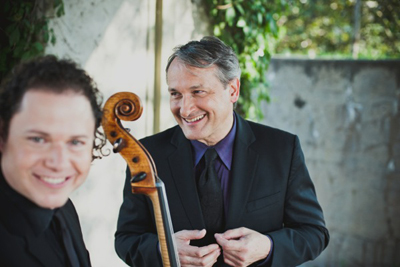
Photo By: Sarah Scott
JVS: Is there anything you want to say to your audience about the mindset with which to best approach your gigs?
MH: Come with an open mind.
CO’R: When we play at Yoshi’s Jazz Club in San Francisco, I hope we’ll be able to play a bit more of the Vertigo Suite, seeing as San Francisco is the central locale. We were recently honored by fan mail from Kim Novak. It would be a dream for her to lend her slender index finger to damp the piano strings for “Carlotta’s Portrait.”
I’ve performed solo in Yoshi’s before. It has what I think is the best piano in San Francisco, and a great sound guy. It’s good to have some amplification so that I don’t have to play on eggshells, and Matt can be expressively heard in a wide dynamic range.
MH: I’ve never been there. I really look forward to it.
JVS: Where do you think that we’re going in terms of classical, pop, and jazz? What is coming out of these fusions? Assuming the planet survives, can you look in your crystal ball and predict where the classical world will be in another 20 years?
CO’R: It’s been going in this direction for decades, since Gunther Schuller and the Modern Jazz Quartet started doing their sorts of things, and further back in the 15th century when Machaut was putting dirty folks songs in his Cantus Firmus for masses. Liszt, Mozart, and Beethoven all jammed on opera tunes, and David Popper used folksongs.
Now there’s a great deal more interest in making a singular profile of a performer. There’s no longer a very simple track to a performing career. I think it’s quite necessary for each of the young performers I’ve come in contact with to establish themselves in a very unique way. Thirty years, that might have involved specializing in Bach or Messiaen; now it involves finding a particular profile that is attractive and compelling and virtuosically successful.
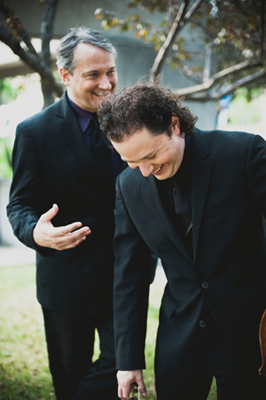
Photo By: Sarah Scott
MH: We’re coming full circle now. In the classical tradition, it started off that some classical performers were the greatest improvisers of their time. We lost that whole tradition. So the idea nowadays is for students to be ready for just about anything, and be flexible and open. There are so many more challenges for them to keep this genre alive. The idea of learning how to improvise, being able to sit in a band as well as play a string quartet, sitting in a section of an orchestra, or going into a recording studio and recording a line for a soundtrack – they have to be able to do all these different things.
The idea of the curriculum – what we do in the conservatory, and what kind of background the next generation will have – has to shift. It’s moving slowly, but people are aware that the traditional pattern of going to Juilliard and practicing seven hours on your Tchaikovsky concerto is not going to necessarily put bread on your table.
JVS: The downside of all that is all the seminars and courses on how to put yourself together into a nice little package that you can brand and sell in the new musical marketplace. How do you separate that from the music? How many people are getting trapped in that commercial marketing paradigm, which leads art to suffer in the process?
CO’R: There are several projects I could name that I find unsympathetic that nonetheless have the full weight of the recording companies behind them. The most important thing is for artists not to take things in a cynical, mercenary kind of way.
I know this is true with Matt too: You just play what you believe in, and if that becomes a peripatetic profile, then that’s what it is. If you really only feel passionate about playing Bach, then that will rise to the top as well. I really think the sincerity of the endeavor is the most important thing.
MH: Absolutely. Well said.


